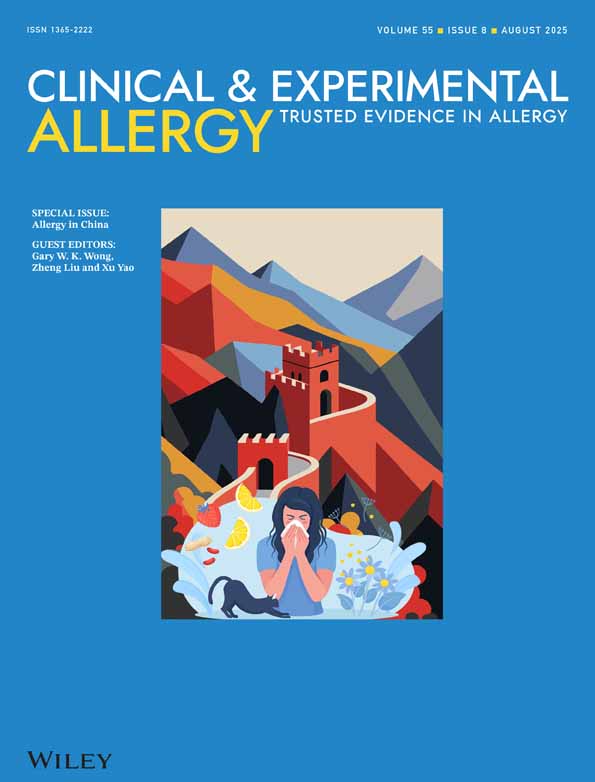Rice hypersensitivity associated with serum complement depression
Summary
We have studied an infant who had flushing, vomiting and diarrhoea after the first and seven subsequent feedings of rice, from 2 to 25 months of age. Serum histamine was elevated 1 and 8 hr after challenge. Anti-rice IgE antibodies were demonstrated by radioallergosorbent and Prausnitz-Kustner testing, but not to soy. Rice fluorescent antibody spot tests for anti-rice antibody were positive for IgE, but negative for IgG, IgA and IgM. Precipitation and passive haemagglutination antibody studies were negative for rice and soy. Early in the course serum complement (C) was depressed, increasing to normal only after soy and rice were eliminated. Incubation of patient's serum with rice extract resulted in depressions of haemolytic CH50, C4 and C3 (23, 39 and 28%, respectively). Incubation with soy extract resulted in depression of CH50 and C3 only (22 and 27%). Sera from two non-allergic controls produced comparable results. C activation may have occurred in vivo following absorption of insufficiently digested foods across an immature gastrointestinal tract. Lethargy and unresponsiveness also occurred early in the course, following ingestion of rice as well as soy.




